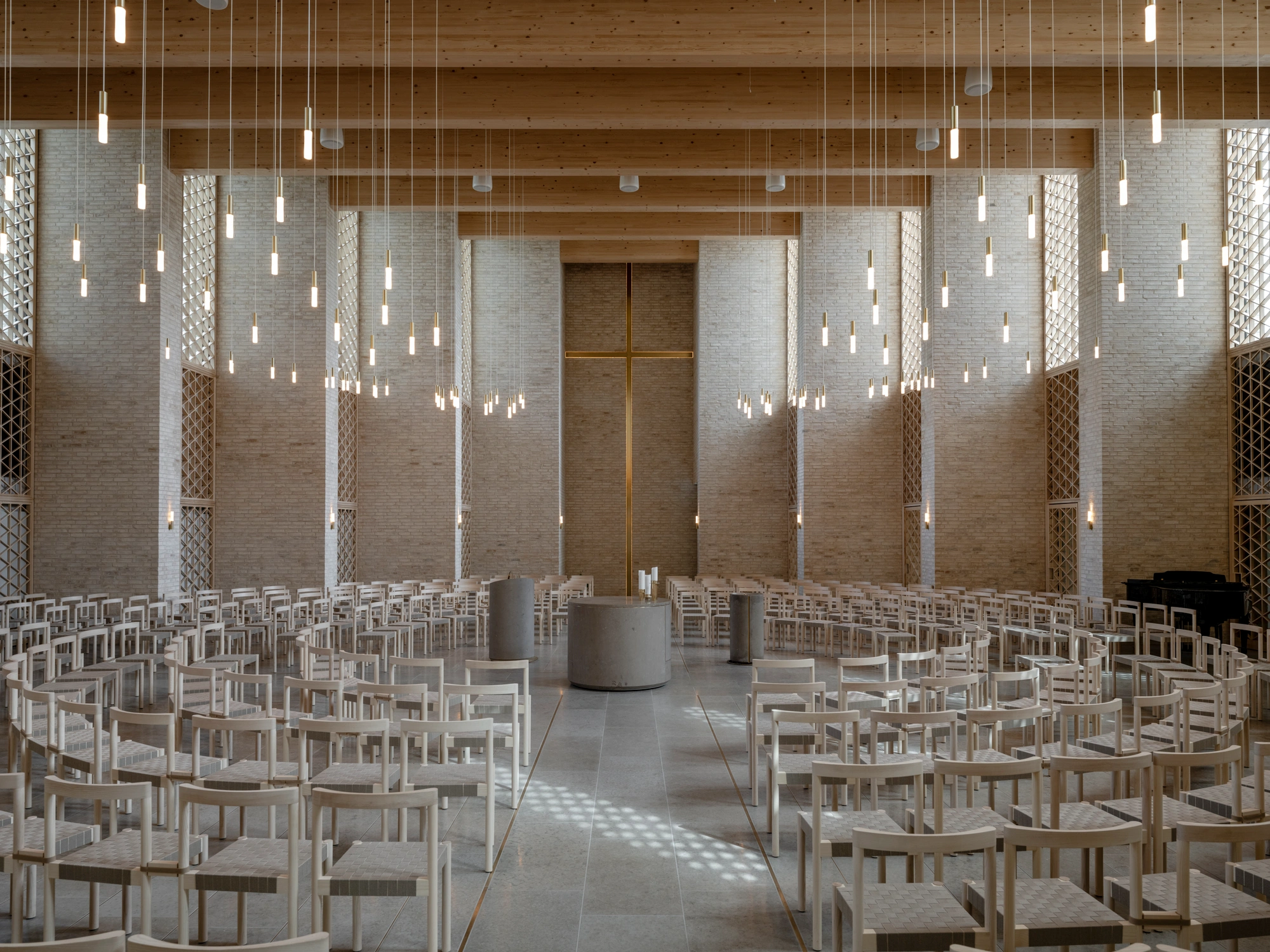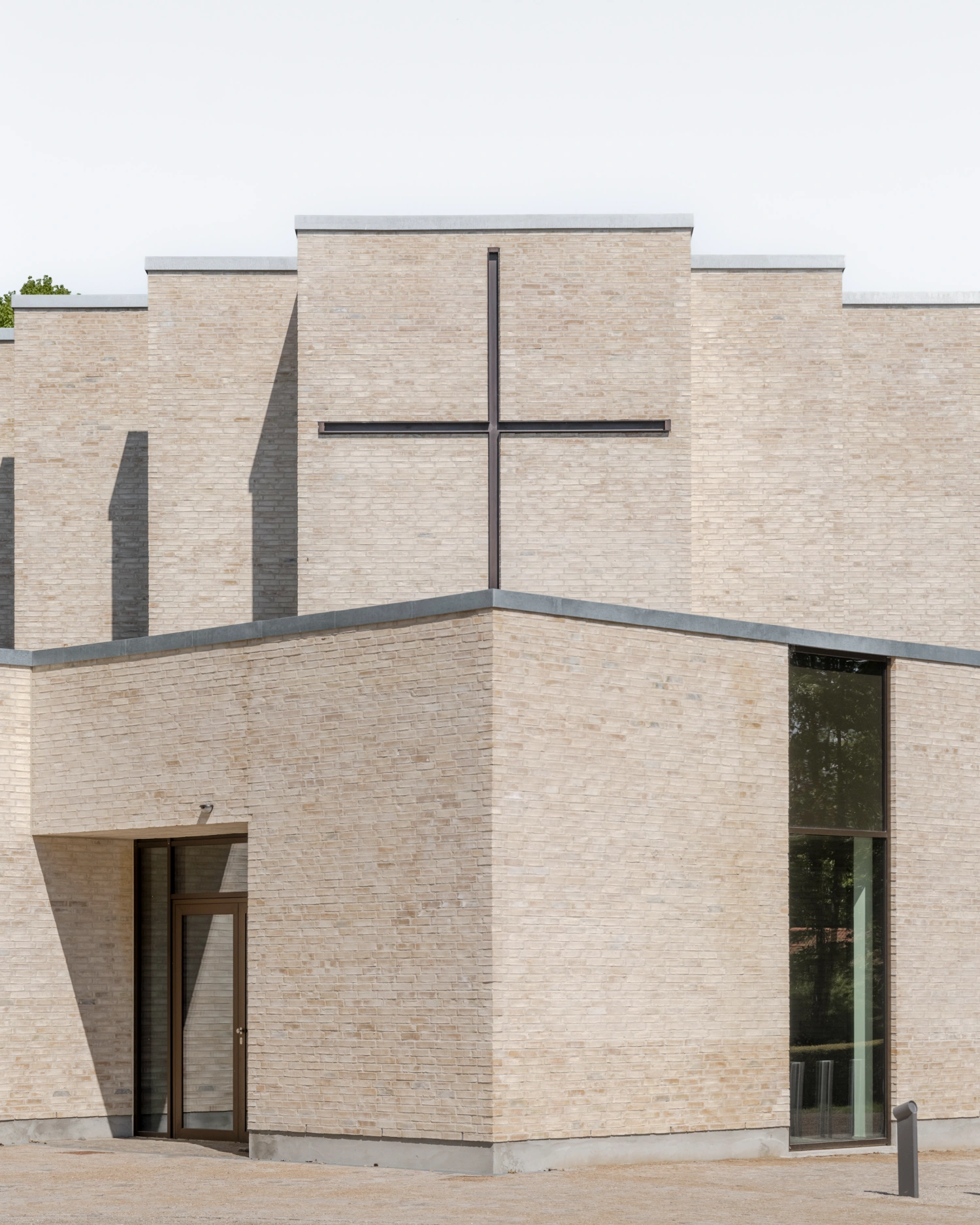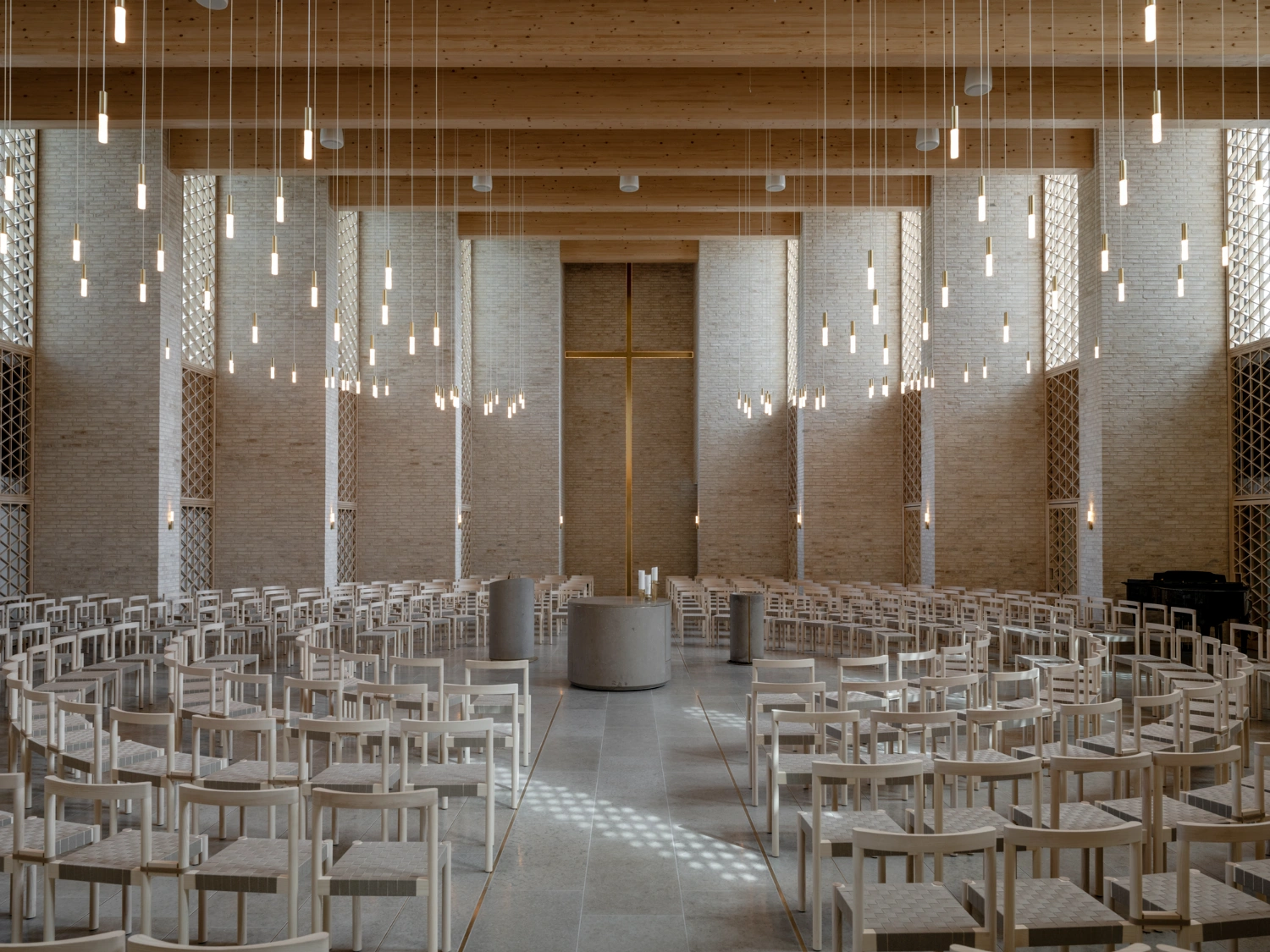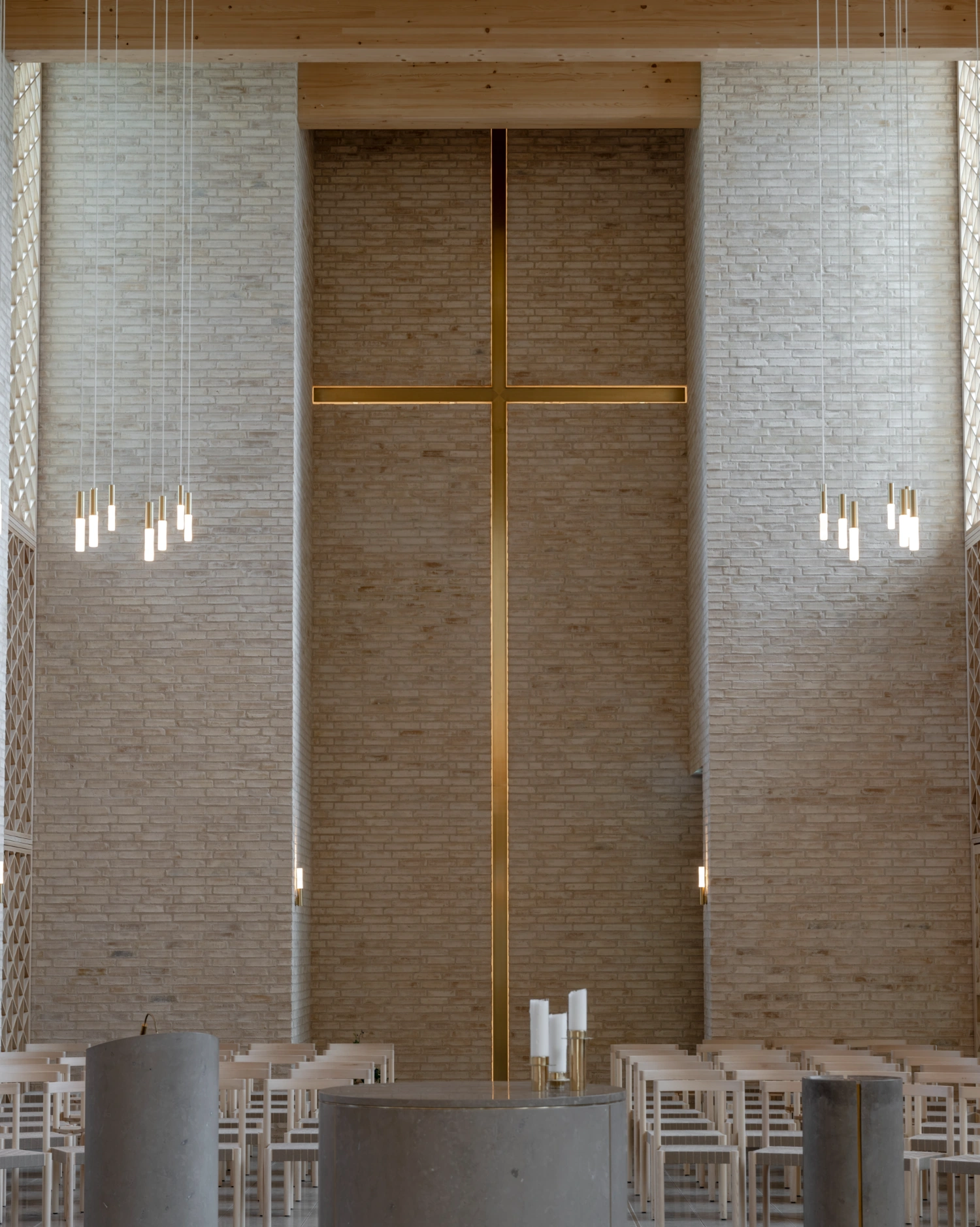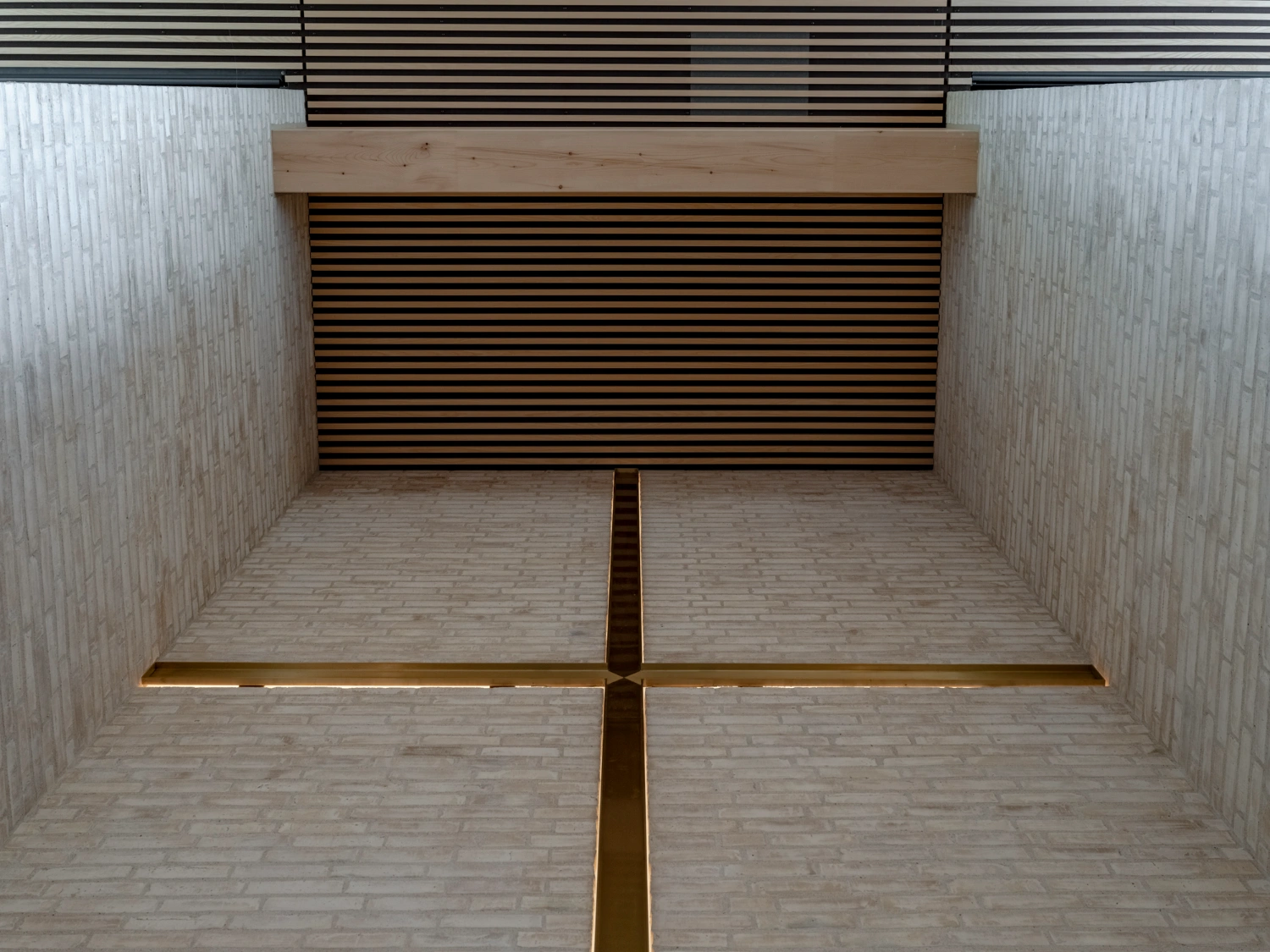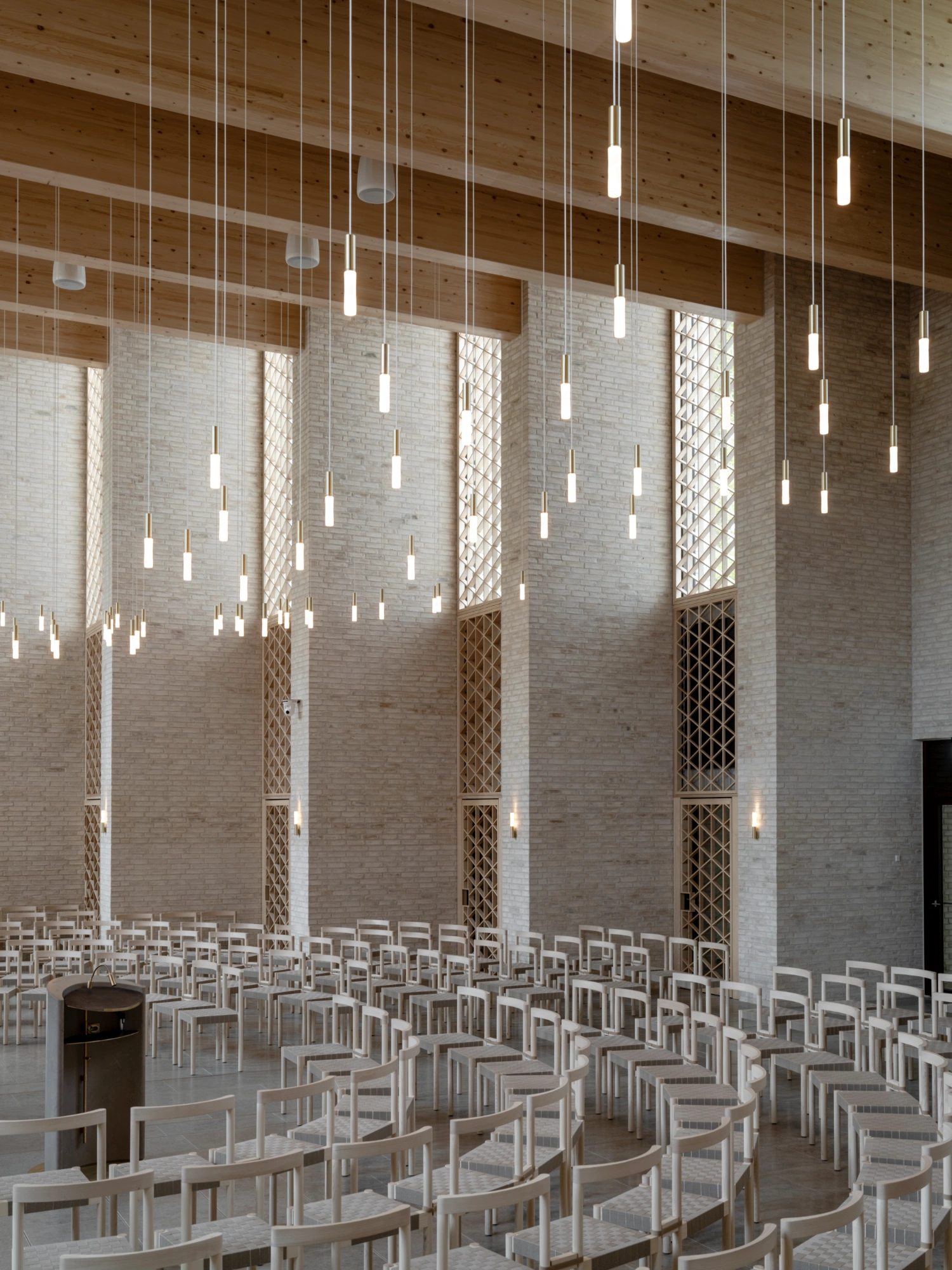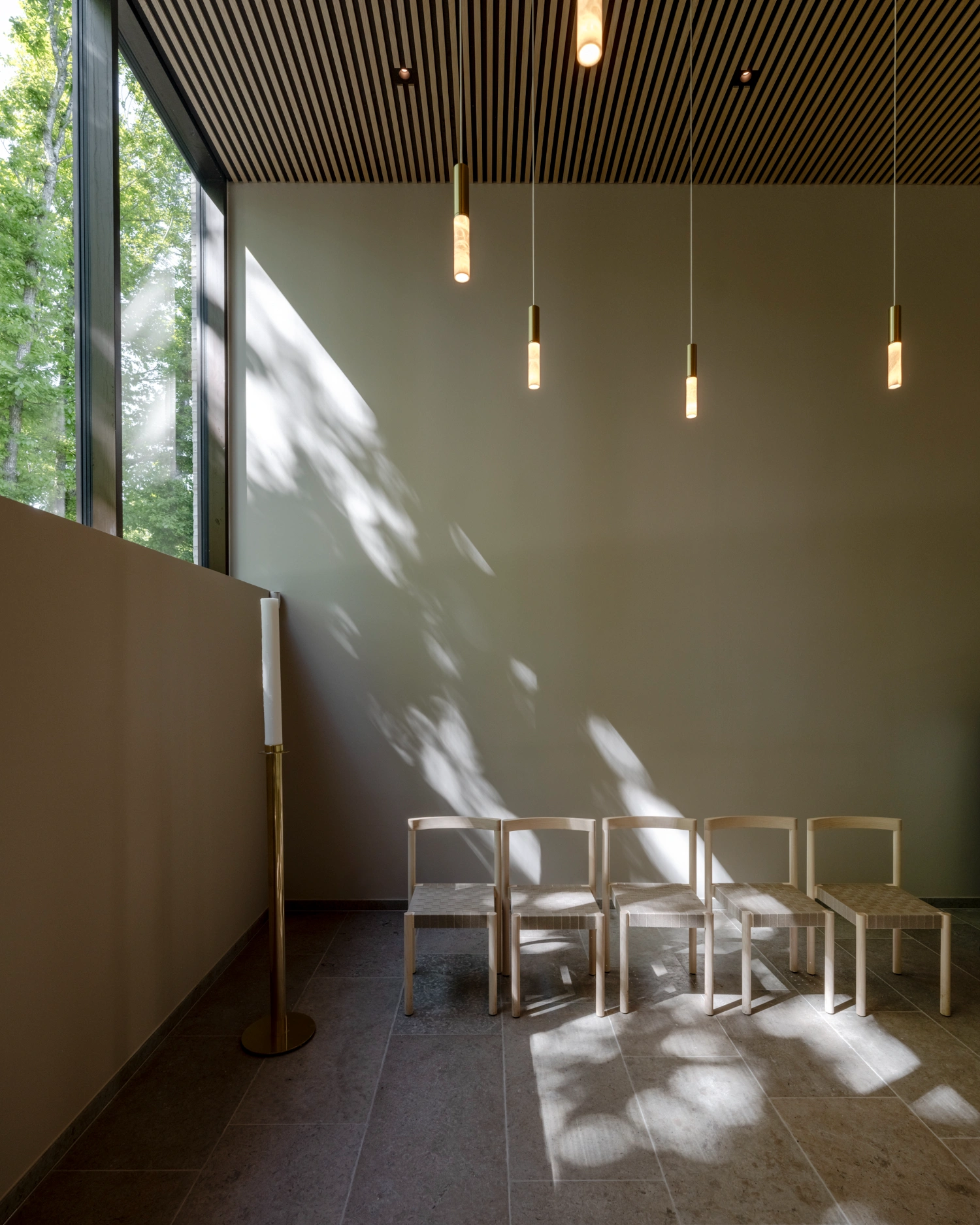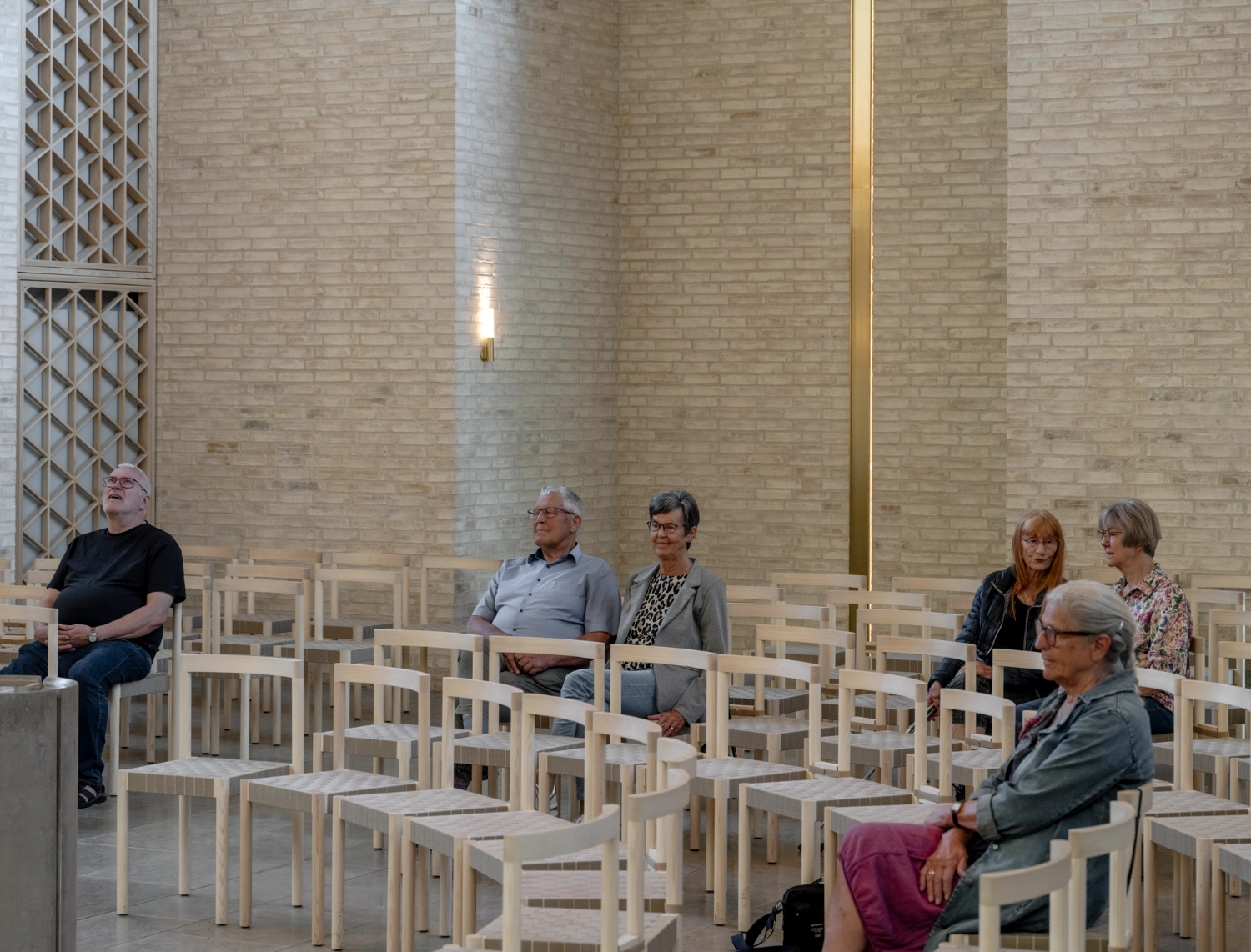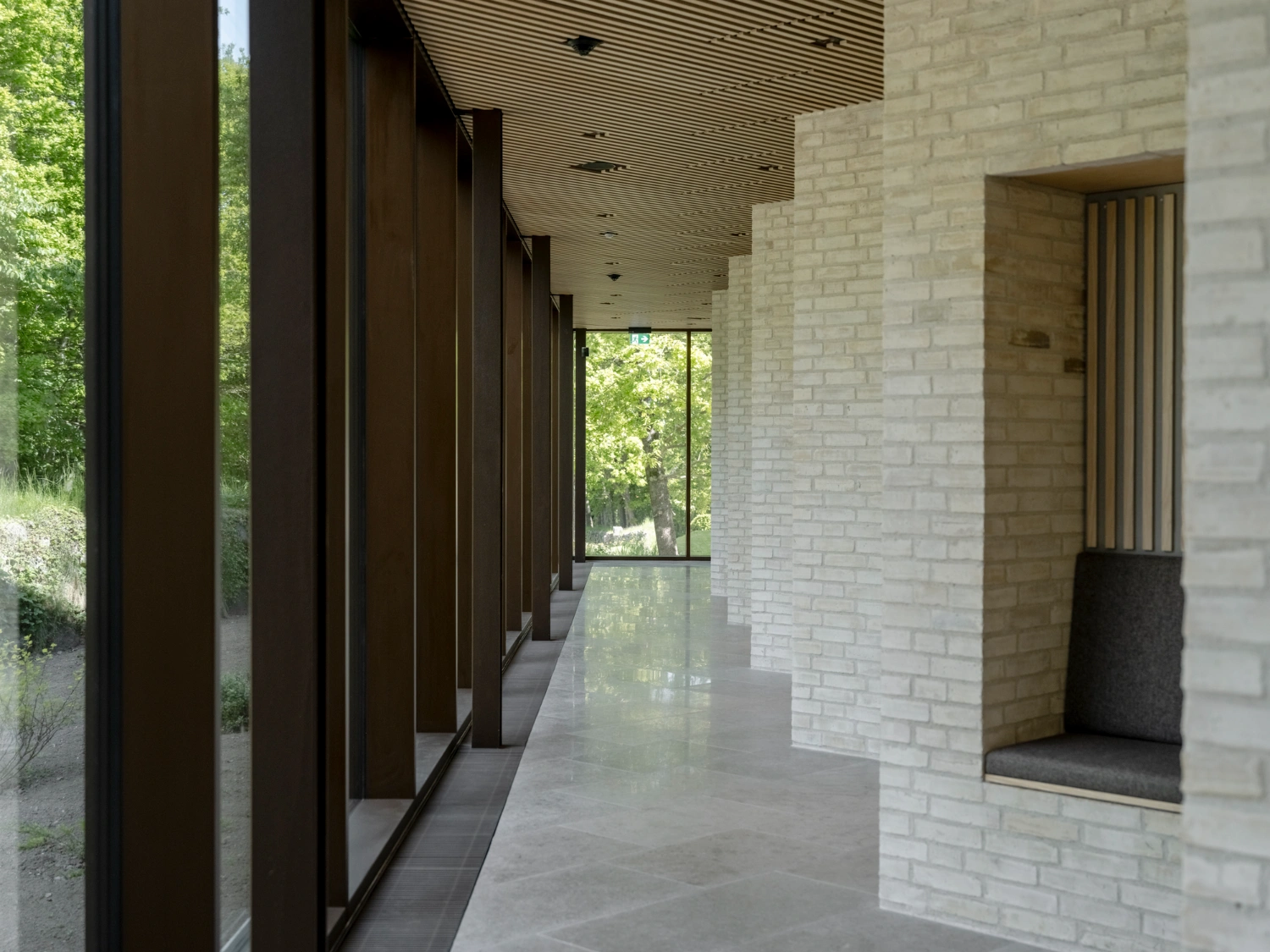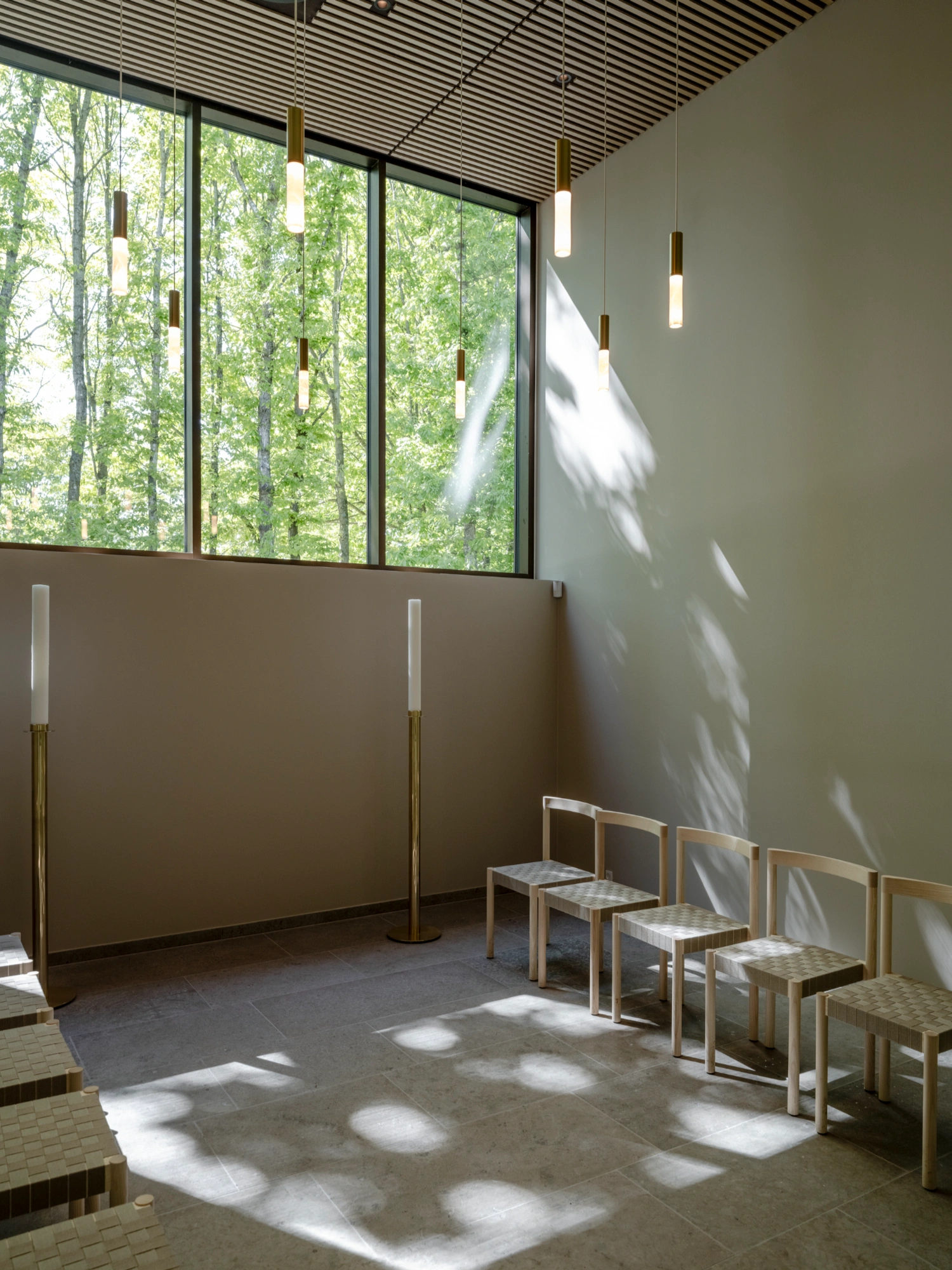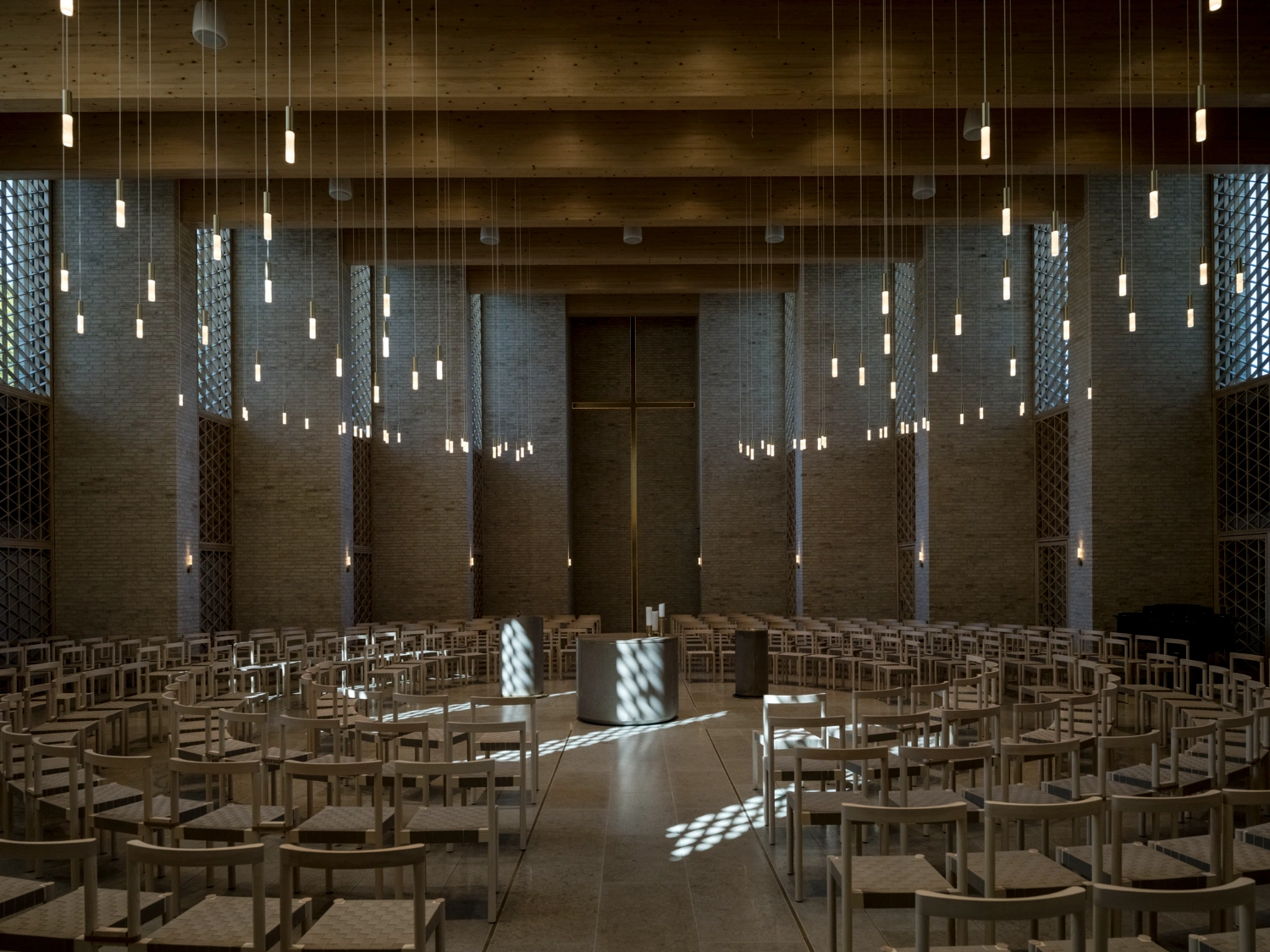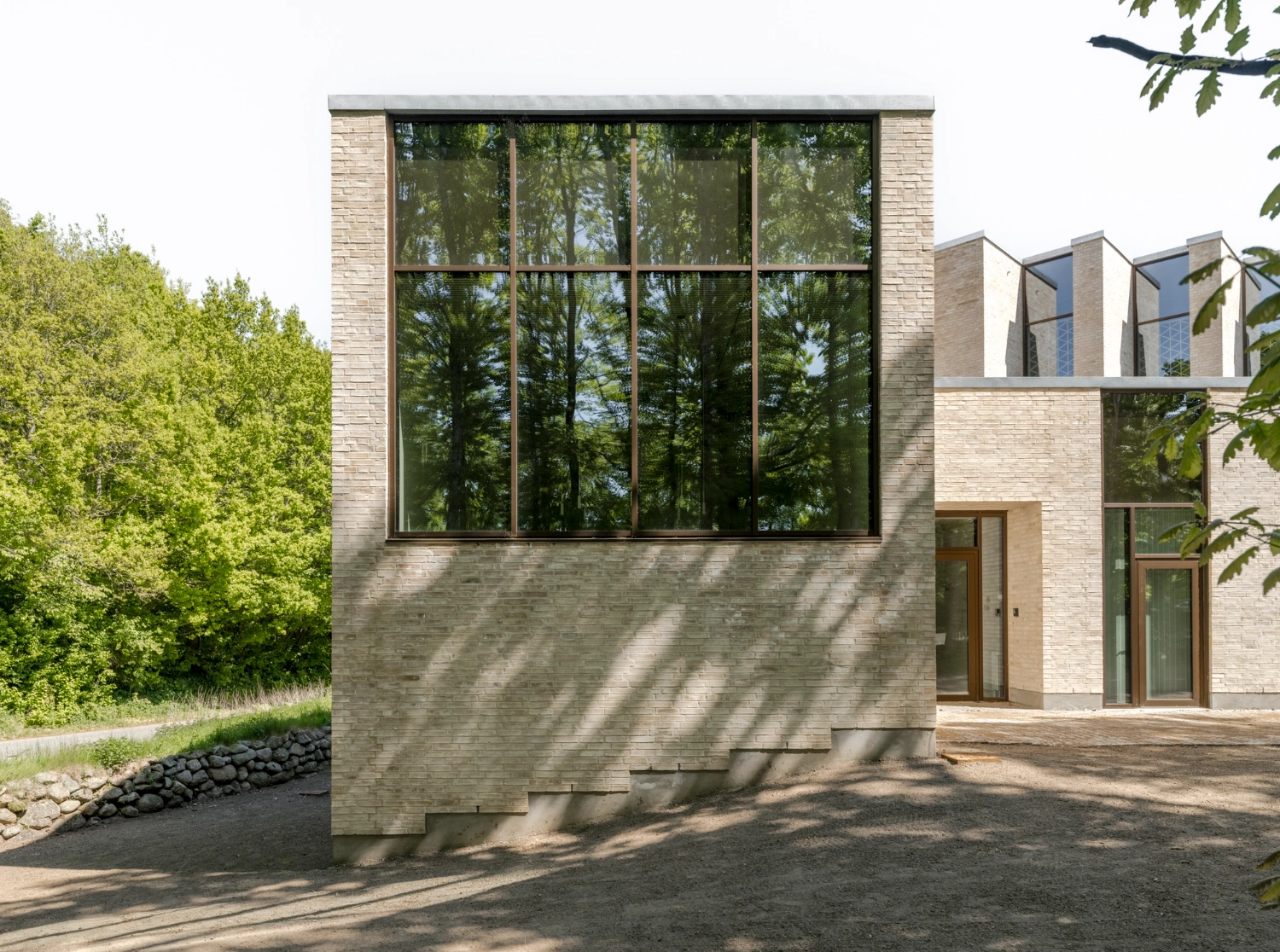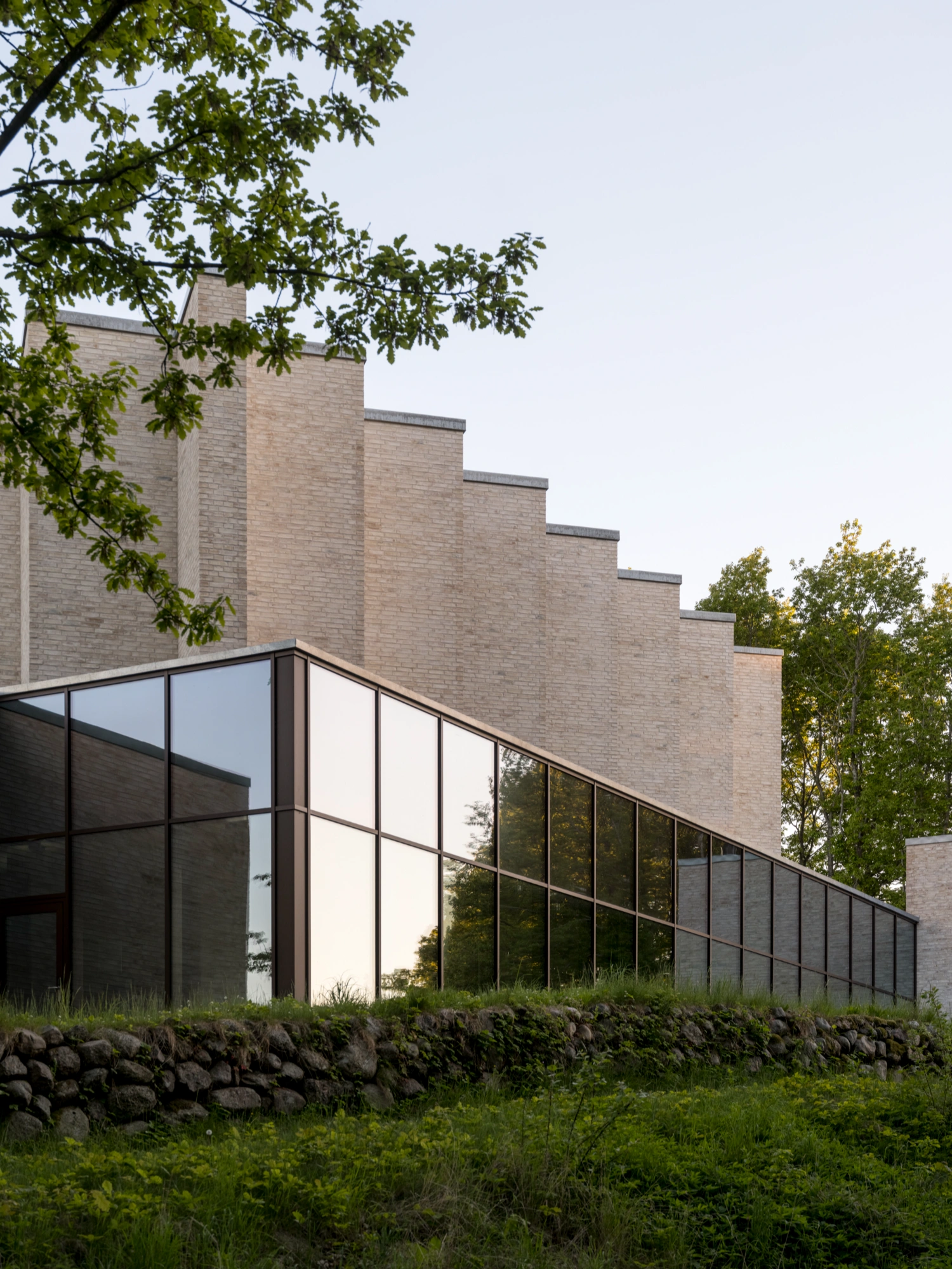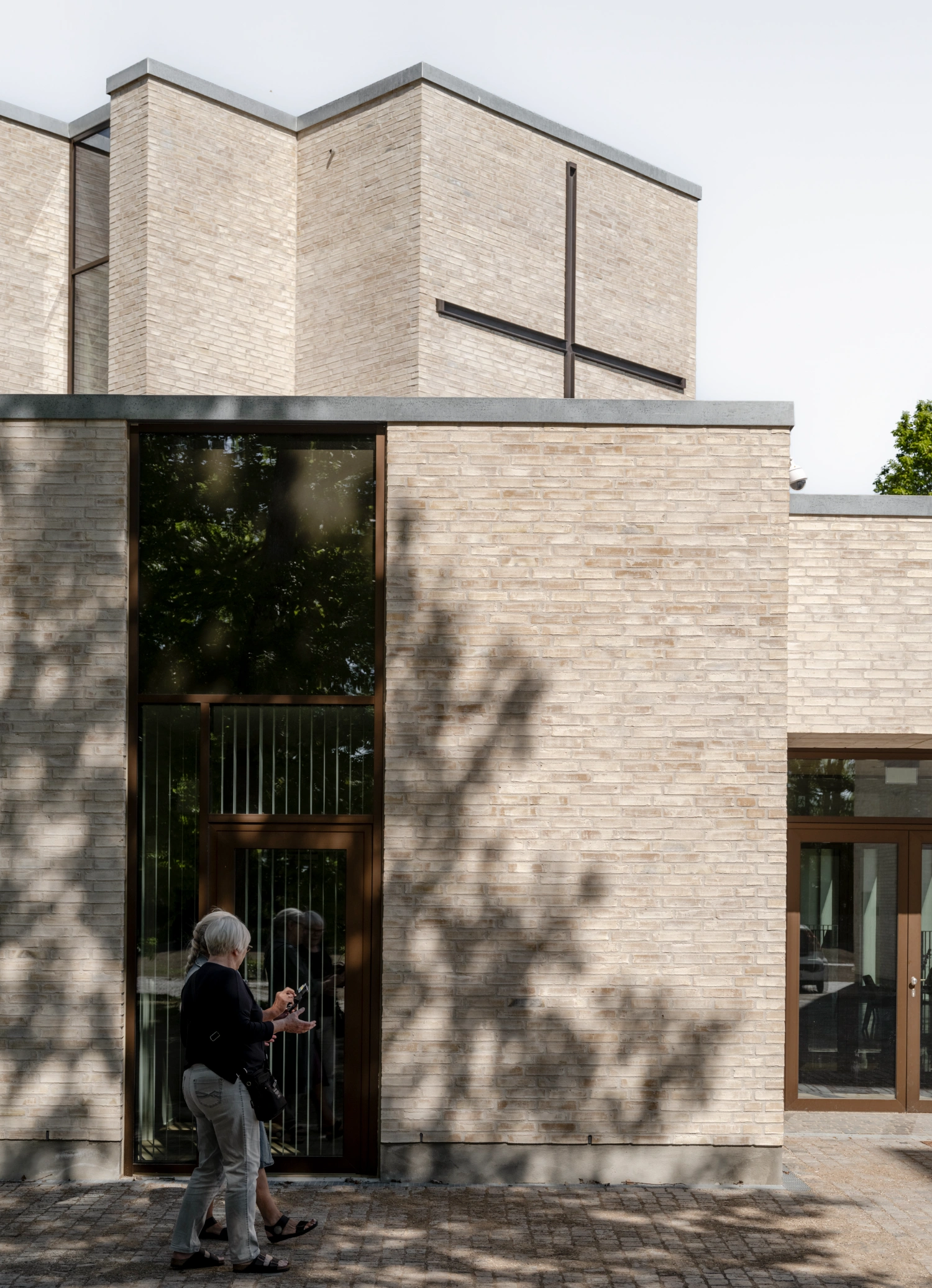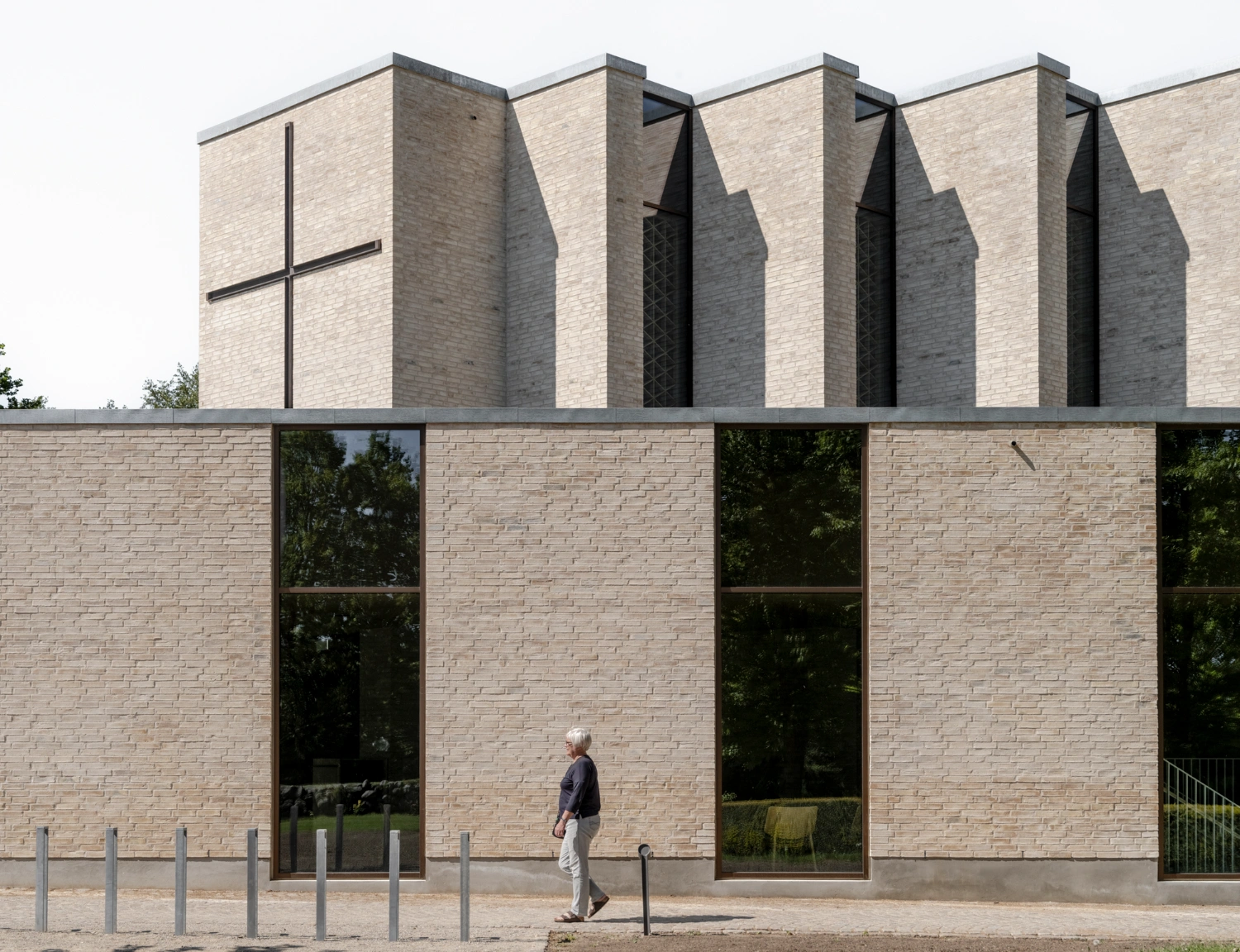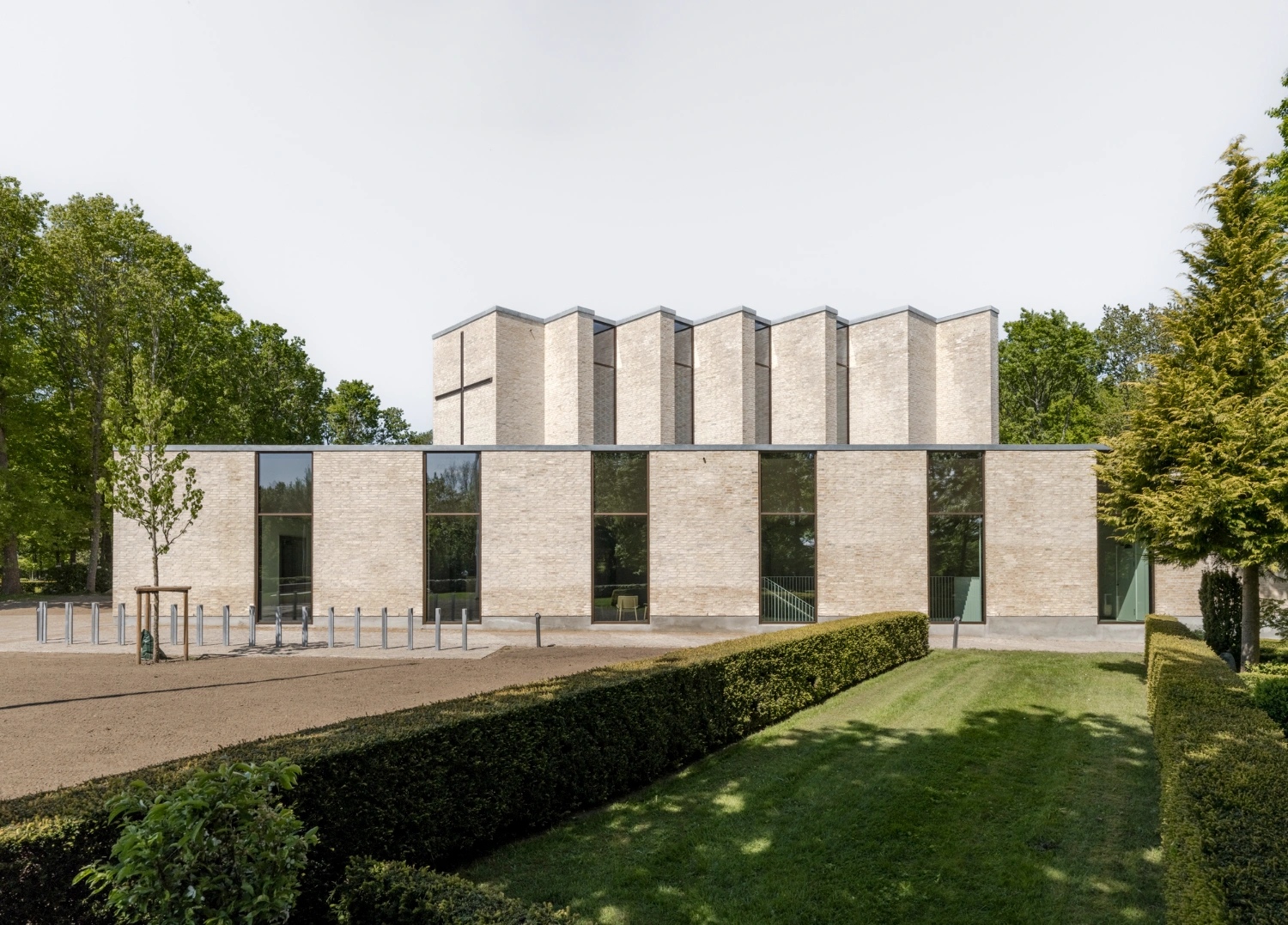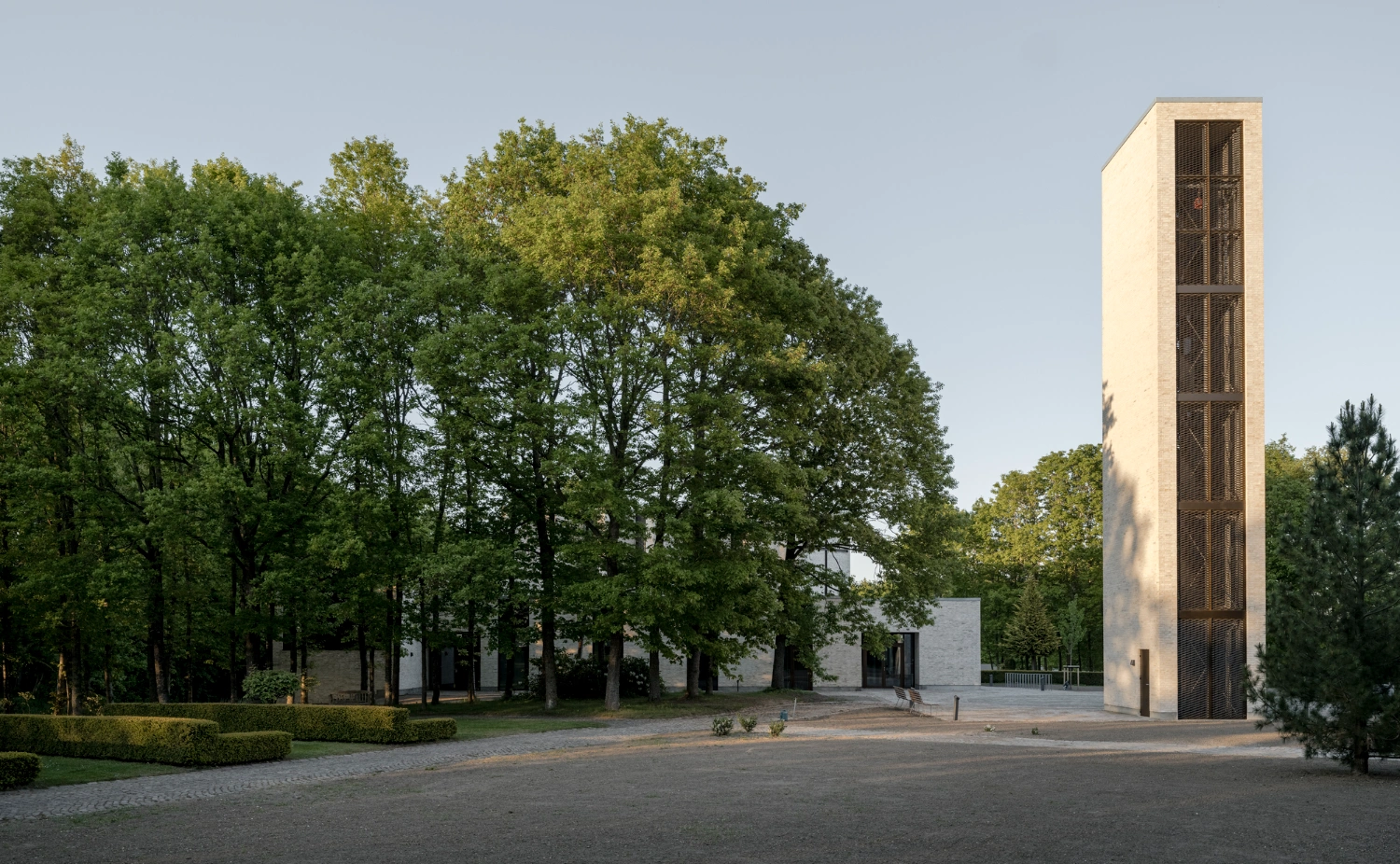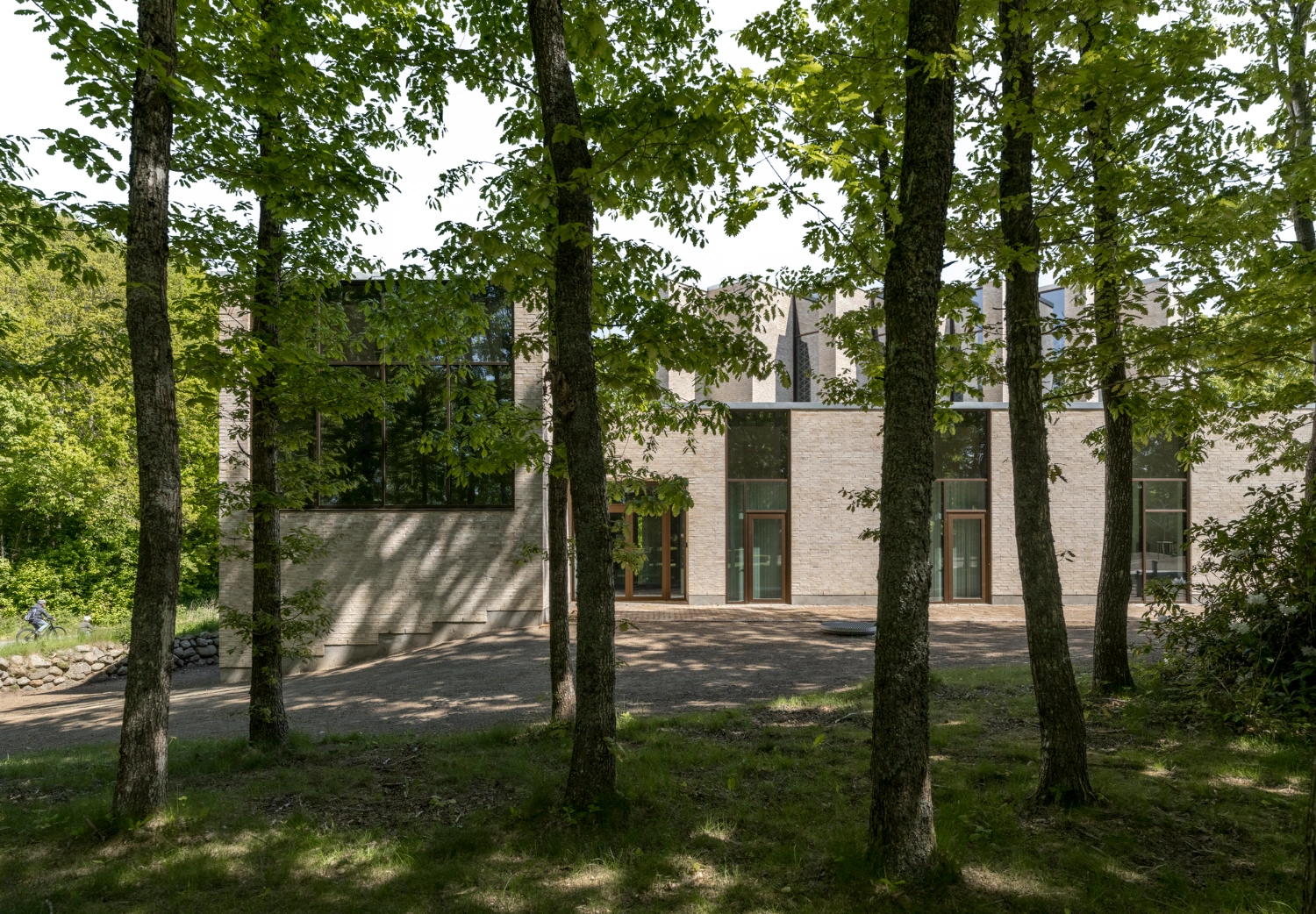In Skanderborg, Denmark, Henning Larsen and Espen Surnevik’s Højvangen Church redefines sacred space as an open civic landscape, blending tradition, community, and light.
Højvangen Church, the first new church in Skanderborg in over 500 years, quietly defies expectation. At a time when many Danish parishes close their doors, Henning Larsen, in collaboration with architect Espen Surnevik, has created a new ecclesiastical space that is less about authority and more about openness. This is not a revivalist project, but a reconsideration of how a church can function as both sanctuary and civic hall, rooted in tradition yet fluent in contemporary rhythms of community life.
From its earliest churches in Randers to the anticipated Ørestad Church in Copenhagen, Henning Larsen’s work has consistently tested how sacred architecture might expand its remit. Here, the emphasis is on light—both physical and symbolic. Director Eva Ravnborg describes light not as an adornment but as a structuring principle, carrying the visitor into a spatial register that oscillates between the everyday and the transcendent. The result is a building that feels both grounded in the Danish landscape and elevated into something more quietly numinous.
Set into the rolling edge of Skanderborg, the 1,500-square-metre church appears less as a monument than as a pavilion that has settled into its surroundings. Its brick, oak, and brass surfaces speak to permanence, but its plan resists hierarchy. The baptismal font—placed at the geometric center—anchors the space, while the absence of a fixed front or nave allows fluid orientation. The effect is centrifugal: from the central clearing, sightlines extend toward the forest, the cemetery, and the old church tower, weaving the new building into a broader spatial and cultural continuum.
This non-directional quality is more than an architectural gesture. As Global Design Director Greta Tiedje explains, the ambition was to create “a space that opens in every direction.” The building becomes porous to different scales of life: it can hold mourning and celebration, solitude and assembly, ritual and the secular. In this way, Højvangen Church sidesteps the rigid typologies of its predecessors. It is less a fortress of belief than a civic anchor—an elastic room where meaning is found through shared presence.
Light is the protagonist, but it is the church’s careful orchestration of thresholds that gives it depth. Walls shift between transparency and opacity, intimacy and collectivity. Outside, the colonnaded façade unfolds niches for retreat and encounter, while the landscaped park extends the church into public territory. The architecture does not dictate how it should be used; instead, it frames possibilities, offering Skanderborg a new cultural platform as much as a place of worship.
Højvangen Church suggests that the sacred today might reside not in monumental forms or doctrinal certainties, but in spaces that embrace ambiguity, exchange, and light. It is both rooted in centuries of tradition and radically open to new futures—an ecclesiastical architecture recalibrated for a secular age.

